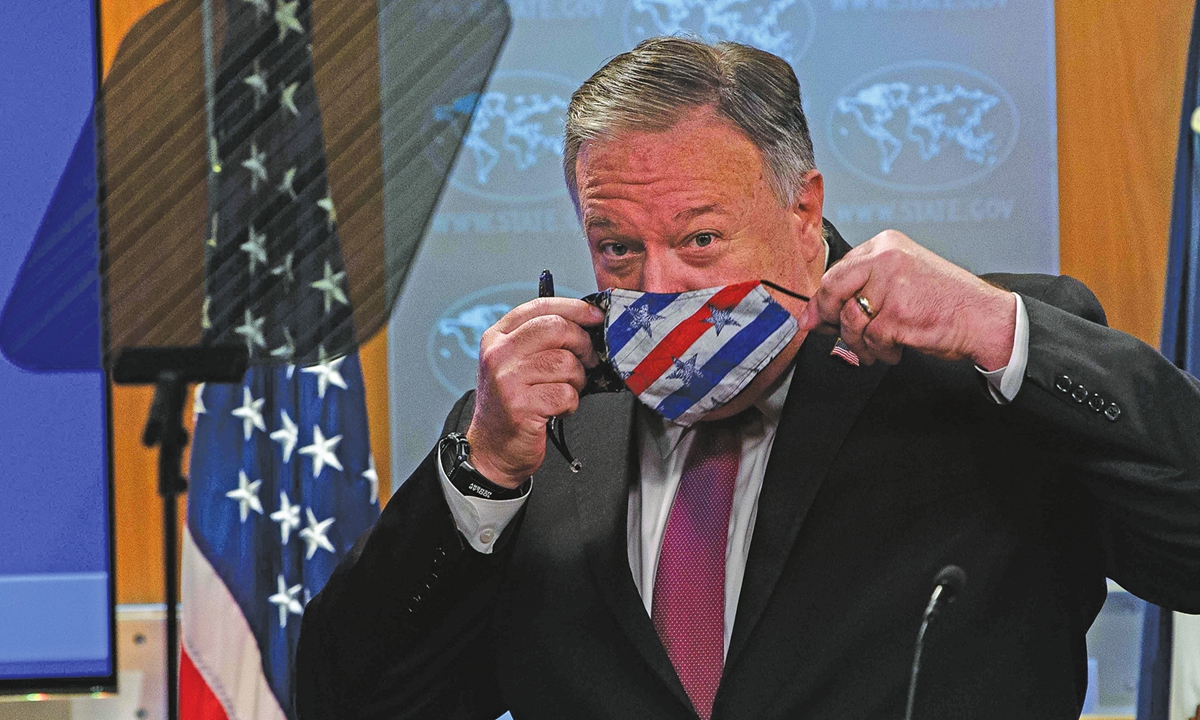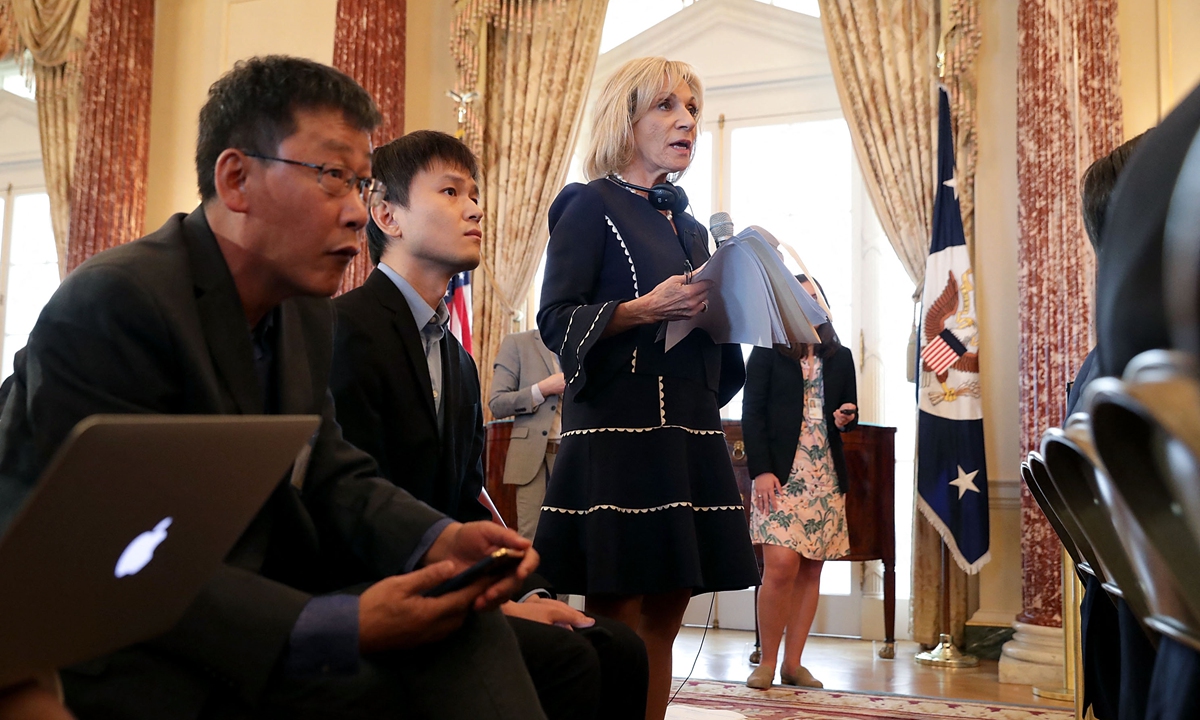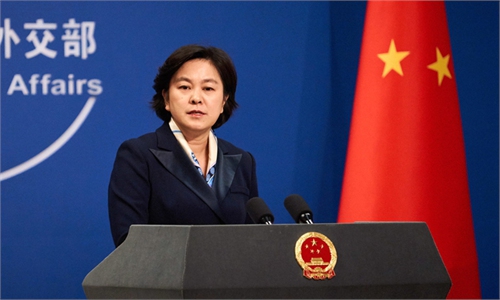How US visa restrictions leave Chinese reporters stranded abroad, separated from families

How US visa restrictions leave Chinese reporters stranded abroad, separated from families
Registration, form-filling, temperature checks, waiting, taking a photo, having fingerprints taken, signing, then finally allowed to leave - Chinese reporters in the US had to endure these procedures six times in the past 18 months.It was early November, a Chinese reporter, again, went through the exact same process at an appointed time at the Application Support Center under the United States Citizenship and Immigration Services (USCIS) in Alessandria, Virginia, the details of which have been deeply etched in memory.
From the second half of 2020 to the summer of this year, the USCIS has had a large backlog of pending cases. There has always been a long line of people waiting to have their fingerprints taken. At the height of the pandemic in the winter of 2020, they could only ask not to be infected.
However, this early winter, apart from the Chinese journalists who visit the center every three months, there weren't many people waiting in line at the immigration department.
In May 2020, an administrative order issued by the US Department of Homeland Security restricted the visa period for Chinese journalists to 90 days.
The first term started in early August, 2020 and lasted 90 days. By as early as June and July, all the Chinese journalists had submitted applications, and by the end of October there was still no news about the progress of the extension applications.
The US has always been good at applying extreme pressure. This kind of policy design is only a blood rush to the head of the officials of Trump administration, but it is endless torture for hundreds of Chinese journalists in the US.
Do you want to go or stay? Several media outlets have been operating in the US for decades, and if they are forced to leave, how would they deal with the remainder of their assets and other follow-up issues? A series of complex issues has everyone on high alert as the continued uncertainty continues to fuel stress and anxiety.
At the last appointed moment, the extreme pressure was finally released when the US approved visa extensions for most Chinese journalists before November 4, 2020.
From the first to the sixth time, every Chinese journalist has gained increased experience in applying for visa extensions. The lengthy form would take more than an hour to fill out for the first time, but now it takes an average of 10 minutes.
Visa restrictions are only one aspect of the US government's suppression of Chinese journalists.
In March 2020, the Trump administration announced that four news organizations, namely Xinhua News Agency, China Radio International, China Global Television Network, and China Daily, must restrict the number of staff in the US and reduce the total number of Chinese employees in the US from 160 to 100.
From February to October 2020, the US government listed almost all Chinese media in the US as "foreign missions" in three batches.
These policies have had a considerable impact on the living conditions of Chinese journalists stationed in the US.
The permanent positions of Chinese media in the US has almost halved with fewer people and more tasks to be tackled. They are also facing challenges from a severe pandemic, the US government's stigmatization policy, and some factions calling for the banning of members of the Communist Party of China from entering the US. All of these major changes expectedly brought great pressure and caused great nervousness among the Chinese journalists.
Fortunately, the Chinese journalists continued to focus on their work in orderly manner, which shook the Trump administration's "initial aspiration" to suppress Chinese media.
Dark moments for Chinese journalists
Shortly after the Xi-Biden virtual meeting, media reported that the US and China agreed to ease visa restrictions on reporters. China will grant the same visas and treatment to US journalists once the US' pledge to issue one-year multiple entry visas to Chinese journalists is in place. The two countries guaranteed each other the normal travel of correspondents between the two countries under pandemic prevention regulations.
This news comes as a profound relief to Chinese journalists in the US. One Chinese reporter arrived in the US in March 2018 just as the Trump administration launched a trade war against China. The dispute between the two countries and the pandemic kept him separated from his family. In the last year of his term in office, Trump's China policy became increasingly unhinged, alongside the government's mismanagement of the COVID-19 crisis as the pandemic raged on.

Former US Secretary of State Mike Pompeo announces the State Department is designating more Chinese media as "foreign missions" on October 21, 2020. Photo: VCG
Personnel exchanges between China and the US have stopped, and the US has stopped issuing new press visas to China. Once again, the family's hopes for a reunion were dashed.
Chinese reporters also faced escalating political retaliation from the US and the growing risk of the pandemic, while needing to care for young children left at home due to school closures and elderly family members in panic.
In July 2020, former US Secretary of State Mike Pompeo repeatedly made disparaging remarks against the CPC and threatened to ban all CPC members from entering the country. Meanwhile, the US launched the China Initiative, cracking down on visiting scholars and academicians for no apparent reason.
At that time, every Chinese journalist felt concerned about the boundless actions of the US government.
Beijing and Washington have been engaged in a "media war" since February 2020, when the US classified a number of Chinese media outlets as "foreign missions" and limited their presence in the US, forcing 60 Chinese journalists to leave the country. One Chinese journalist had to close his bank account, cancel his apartment lease, sell his car, pack his luggage, and send the luggage back to China in just over 10 days in a short notice and without any preparation.
In a severe COVID-19 outbreak, a plane ticket home from the US was hard to come by. The Chinese Foreign Ministry then made overtures to the US, asking for a period of grace, but the US refused. Eventually the journalist had to fly from the US east coast to the west coast, and finally back to China.
Recalling all this, the journalist said that the warmth and kindness of the ordinary American people and the rudeness and domineering nature of the US government made him learn more about a complicated America.
Years of inequality
Always praising itself as a "beacon of liberty and democracy," the US has employed handy buzzwords including openness, inclusiveness, and diversity as feathers in the caps of its system. However, during his past four years in the US, one Chinese reporter has experienced many other aspects of the country.
First, although the US constantly promotes values of equality, what it actually pursues is inequality and suppression.
The American government instigated a "media war" between China and the US, expelled a large number of Chinese journalists, and refused to renew media visas, making it difficult for Chinese media personnel in the US to return home. However, the US government and media continued to portray themselves as the victims at every turn.
Even before the outbreak of the "media war" between the two sides, China had always issued multiple-entry visas to American journalists, while the US issued single-entry visas to Chinese journalists, a portrait of inequality.
At that time, many Chinese journalists in the US who returned to China for meetings or vacations were subject to administrative review or outright rejection when reapplying for US visas in Beijing. They were therefore unable to return to the US for work. Some were even unable to pack up their belongings left behind in their apartments in the US.
Statistics showed that at least 21 Chinese journalists were denied visas from 2019 to 2020. While the US government and media blew every little problem they encountered out of proportion, Chinese journalists have suffered years of inequality and mistreatment in silence.
Secondly, the US government is very good at fabricating rumors and appointing blame.
Still take the visa process as an example. In 2020, an American government official said publicly that the US had issued 3,000 media visas to China, but only "a few dozen" American journalists are allowed to work in China. This seemed to be disproportionate at first glance, but, the US in fact secretly changed the concept. Every time Chinese journalists enter the US or their families visit them, they are asked to apply for a media visa. The US made a comparison between the number of US journalists working in China and the number of "media visas" that Chinese journalists and their families apply, showing it has a warped sense of reality on this issue.
Another notable instance is how the US classifies Chinese media outlets as foreign missions, and frequently labels Chinese media as "state controlled." However, some American media outlets are backed and controlled by US authorities. The Voice of America in particular, is a de facto US government agency, entirely funded by the US government.
Thirdly, the American government has repeatedly claimed that Chinese journalists in the US enjoy the openness and freedom that "their counterparts in China do not," which could not be further from the truth.
Having lived in the US for nearly four years, a Chinese reporter feels that, although there are not many obvious limitations apart from the visa ones in the past year and a half, hidden restrictions actually exist everywhere.
The US government has classified Chinese media as "foreign agents" and "foreign missions," and major American news outlets extensively cover China negatively. In the country's highly political and ideological society, it's not surprising that American people are misled to believing falsehoods about Chinese media.

Reporters attend a news conference at the US State Department on May 23, 2018 in Washington, DC. Photo: AFP
Especially since 2020, with the escalation of the Trump administration's crackdown on Chinese media, Americans seemed to not dare have any form of contact with Chinese media outlets. Some Chinese journalists' long-term sources in the US were no longer reachable, and many of Chinese media's foreign employees also left.
Fortunately, this serious, long-existent asymmetry is now expected to be resolved with the unremitting efforts of Chinese diplomats, and the patience and persistence of Chinese journalists in the US. Many Chinese journalists there have not had the opportunity to return to China since 2019, unable to see their parents, spouses, children, and other loved ones back home.
Chinese reporters can also feel the frustration of the officials at the USCIS, who have to renew media visas for Chinese journalists every three months. One day, when a Chinese reporter expressed his wish to have the current stalemate to be resolved soon when applying for his visa renewal at the center, they replied, "that is our wish too."
The people of both nations are inextricably linked and will always need to foster a deeper understanding of the other no matter the changes that lay in both countries' futures. And journalists are essential to enhance mutual understanding. It will be a great relief to the Chinese diplomats and journalists who have made great effort in seeing fewer barriers between the communication of Chinese and American media in the near future.


